When Luke Skywalker receives his father’s lightsaber from Obi Wan in Star Wars Episode IV: A New Hope, he learns that it is “not as random or clumsy as a blaster; an elegant weapon for a more civilized age.” Here at our Center for Sustainable Nanotechnology, we don’t work with weapons, no matter how sophisticated or elegant. We do work with light though, specifically of the focused, high intensity sort that is widely known as “laserlight”.


Stay tuned for a post on how we use laserlight to do scientific research, but today, we simply ask: what is it? What is this laserlight, and why is it so special that is has fascinated folks ever since Albert Einstein first proposed its possibility in 1917?
Laserlight is produced by lasers, which are engineered devices that have found such widespread use in our modern life that I’ll only mention one example here. Every time you struggle at your grocery store’s self-checkout, you align a barcode with red laserlight that allows the machine to read what it is you want to pay for by detecting the pattern of light reflected back into the scanner. Once that process is complete, the machine beeps and you get charged. No laser, no coffee, milk, sugar, toast, eggs, and bacon, so think of that next time you have breakfast.
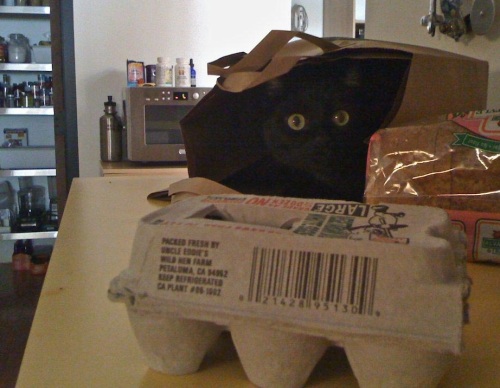
Now, the laser is a classic example of how innovation sometimes works: with an entire generation of physicists growing up reading Einstein’s famous 1917 prediction, it is no wonder that the groundwork for the practical implementation of the laser was laid not by just one person but several scientists. In fact, the world’s best scientists at the time were in the US and the former Soviet Union. This idea of opening the ‘adjacent possible’, which Albert Einstein’s work effectively did when it was published in 1917, is what Steven Johnson writes about in his fascinating book “Where Good Ideas Come From”:1 history suggests that it is much more likely for groundbreaking, transformative ideas to be produced by several people at once, often in different countries or on different continents, as opposed to just one single mind. In fact, Johnson argues that the proverbial “eureka” or “aha” moment is unfortunately a very rare human experience – not even the printing press is solely attributable to Johannes Gutenberg – and the laser was certainly not invented by one person, either. At the end of the day, three of the key scientists, Charles Townes, Nicolay Basov, and Aleksandr Prokhorov, shared the 1964 Nobel prize in physics “for fundamental work in the field of quantum electronics, which has led to the construction of oscillators and amplifiers based on the maser-laser principle” – a mouthful that is yet an amazing testament to the international reach of science considering the 1962 Cuban missile crisis had brought the world to the brink of nuclear destruction.
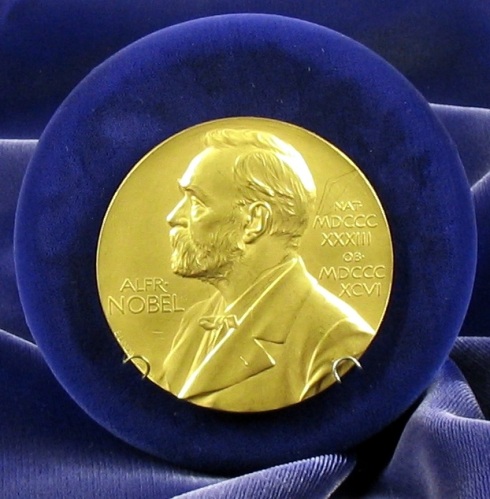
But back to our laser-enabled bacon and eggs and cappuccino. When the first operational laser was presented, many scientists and engineers called it a very expensive “solution looking for a problem”. Yet, you probably have many friends who would call the laser one of the coolest and most useful inventions in our history. So why was the innovation so vastly misunderstood when it was first published? Science and engineering simply weren’t ready for it and needed to catch up. This ended up happening quite quickly, and demonstrates that innovation depends as much on the sectors receiving the innovation as on the group that produces it. Needless to say, the laser is awesome and it’s hands-down one of the greatest innovations in human history – you’ll find it in most of the top-ten science and technology lists that are available on the Internet machine.
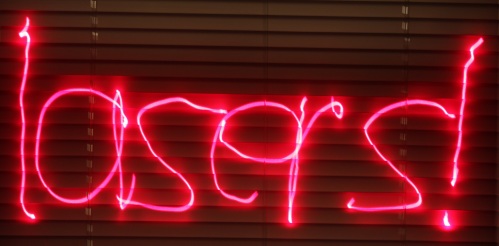
So how does lasers work? That’s the best part! Imagine you’re in a room with a bunch of golf balls on the floor and a thin beam or rail suspended between two walls. Now imagine for some reason you start lining up the golf balls on the rail. It would take you a lot of work to do that, right? The most “stable” place for the golf balls to be is back on the floor, and the slightest disturbance could send them careening downwards.
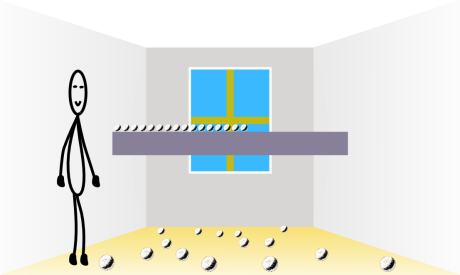
Finally, with more than half of your golf balls sitting perfectly still on the rail, you decide to take break to admire your work. Foolishly, you sit down on the floor with a thud and look in horror as a few golf balls fall to the floor with an instantaneous clack. This clack sends a few more golf balls speeding towards the floor and soon your once-quiet room is a chorus of clacks.

This is just how a laser works, except the golf balls are actually electrons whizzing around an atom and the clacks are actually waves of light. Just as each golf ball clack caused other golf balls to fall with a clack, in lasers, each light wave stimulates another light wave to be emitted from an atom. Additionally, instead of you painstakingly placing the balls high up on a rail, lasers have fancy power sources that move lots of electrons higher up in energy.
So, we’ve learned that lasing action has to do with electrons falling from high energy states, emitting waves of light, and stimulating the emission of even more waves of light. “So what?” you say… “Give me my laser!” you say… Well, to get to your laser we must move beyond our golf ball analogy. Lasers have parallel mirrors on either side of what I’ll call the “light wave zone” (the golf ball room, in our analogy). Light waves bounce back and forth between these mirrors and stimulate the emission of more light waves.
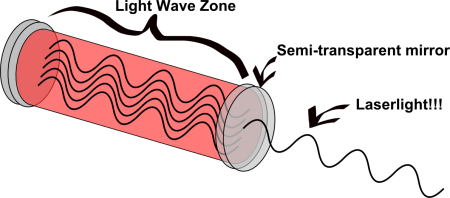
Since the power source keeps pumping energy into the light wave zone to make this all possible, if you didn’t let some energy escape your laser would explode!! Lasers avoid exploding by having one of the two mirrors ever so slightly transparent. The light that leaks out of the light wave zone (called the “gain medium” in science lingo) is laserlight! Sufficient amounts of laserlight are allowed to escape and bring us Star Wars, Nobel prizes, and even your groceries –voila: your breakfast is served.
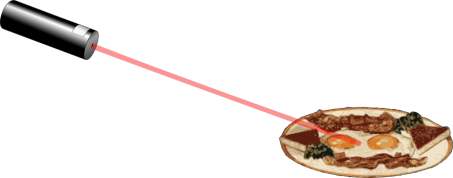
References:
(1) Johnson, S. Where good ideas come from; Riverhead Books: New York, 2010.

Can I use your picture of the word laser for a college presentation?
Hi DJ Ingram! Of course you can use our picture. All our images, unless otherwise noted, are published under Creative Commons Attribution-NonCommercial-ShareAlike 3.0 Unported License. So, just reference our blog title and URL somewhere in your presentation. Cheers!